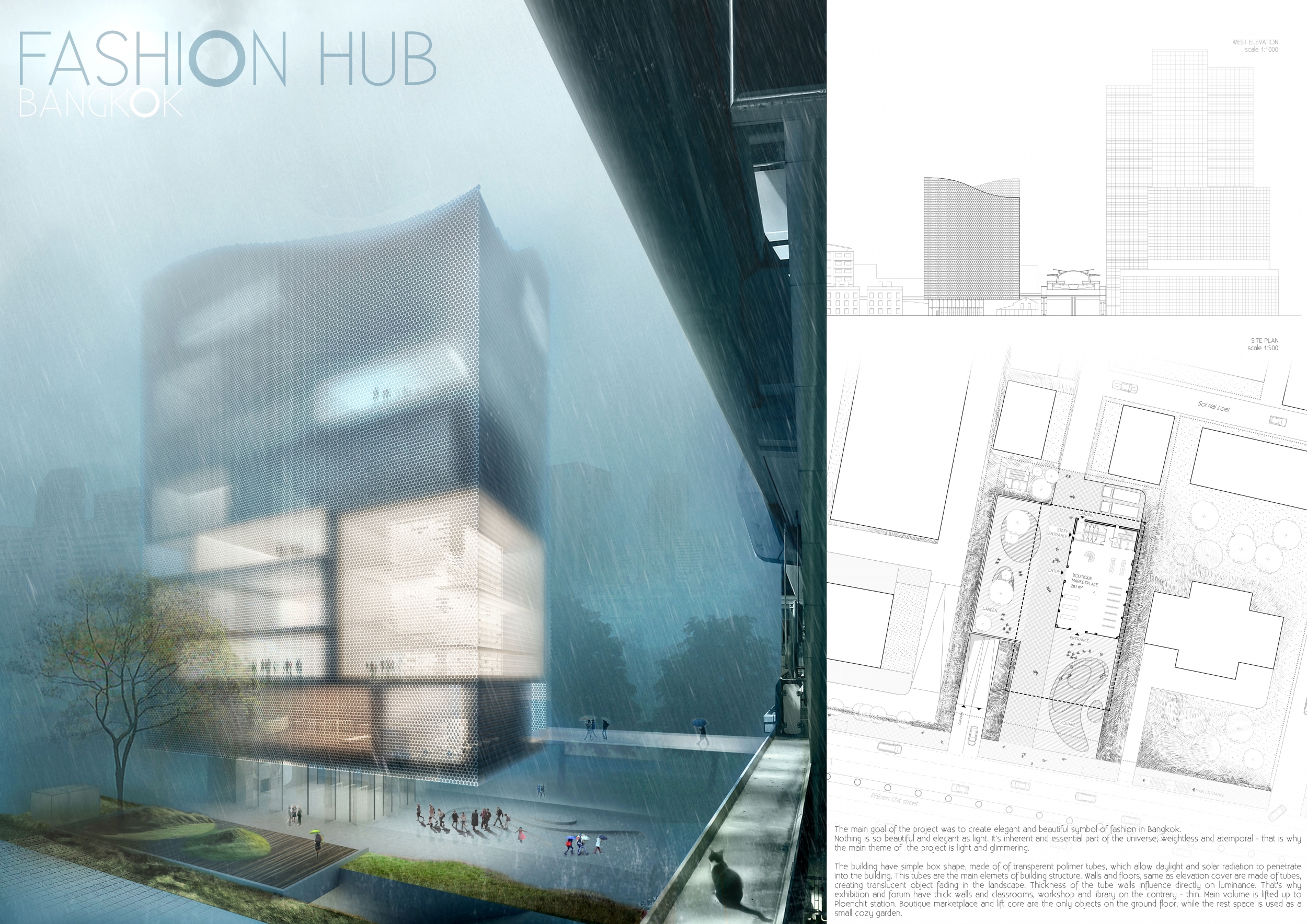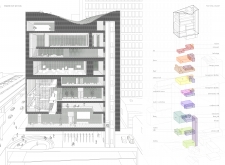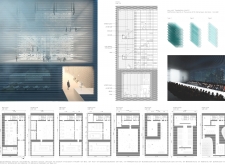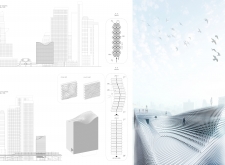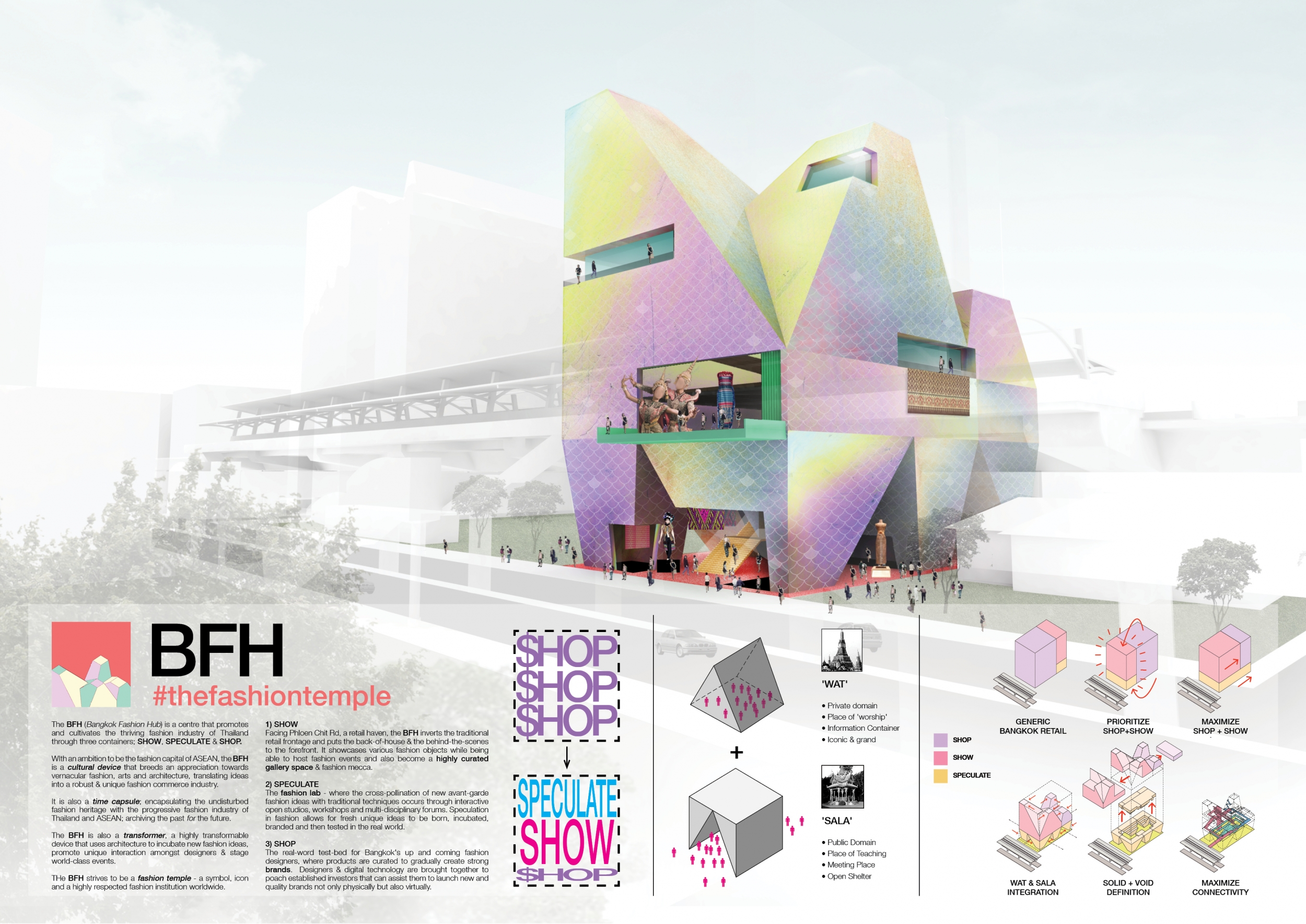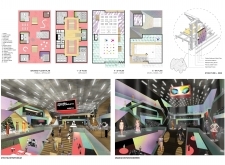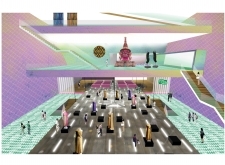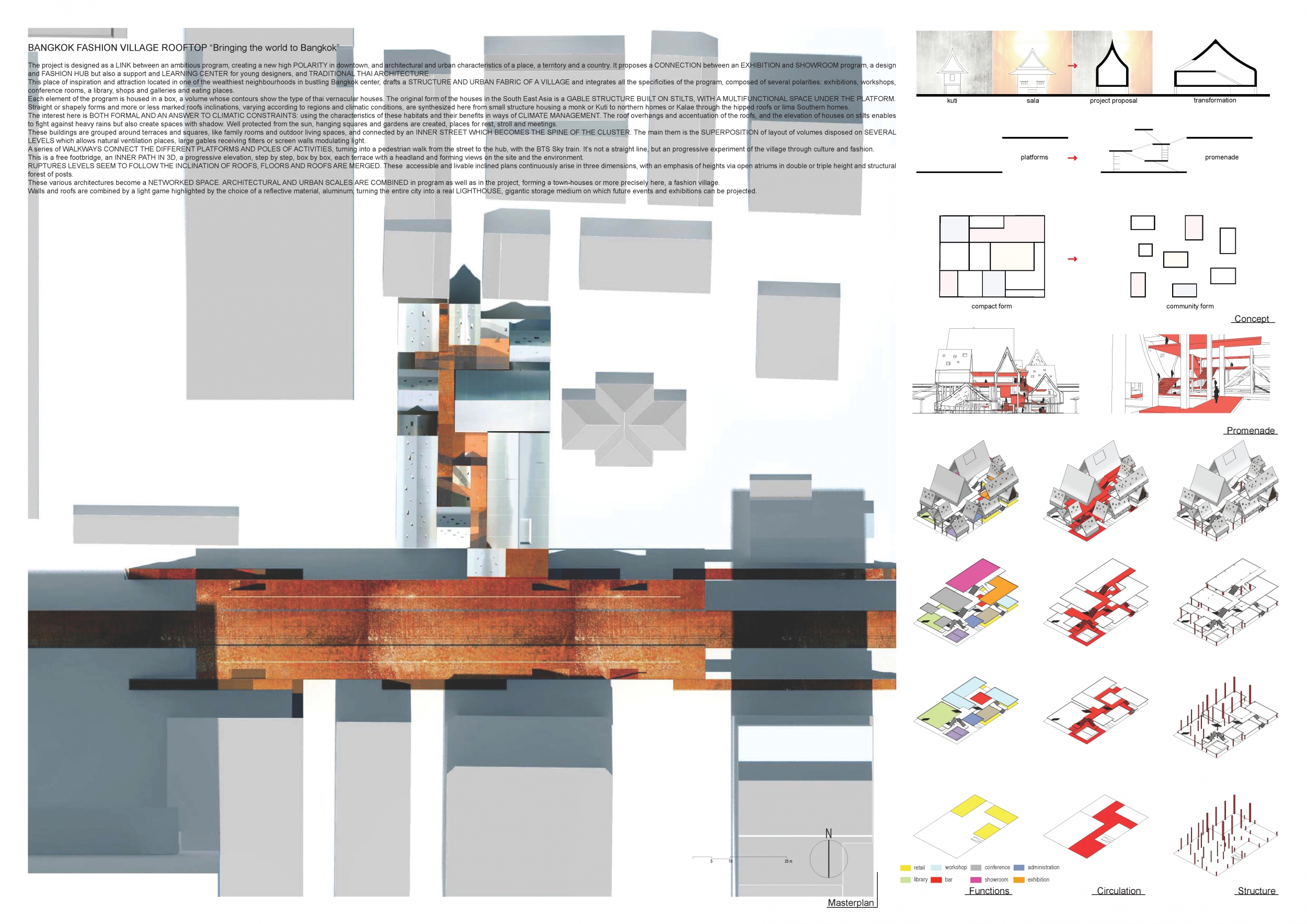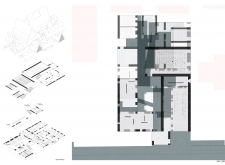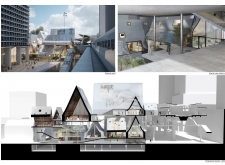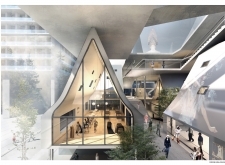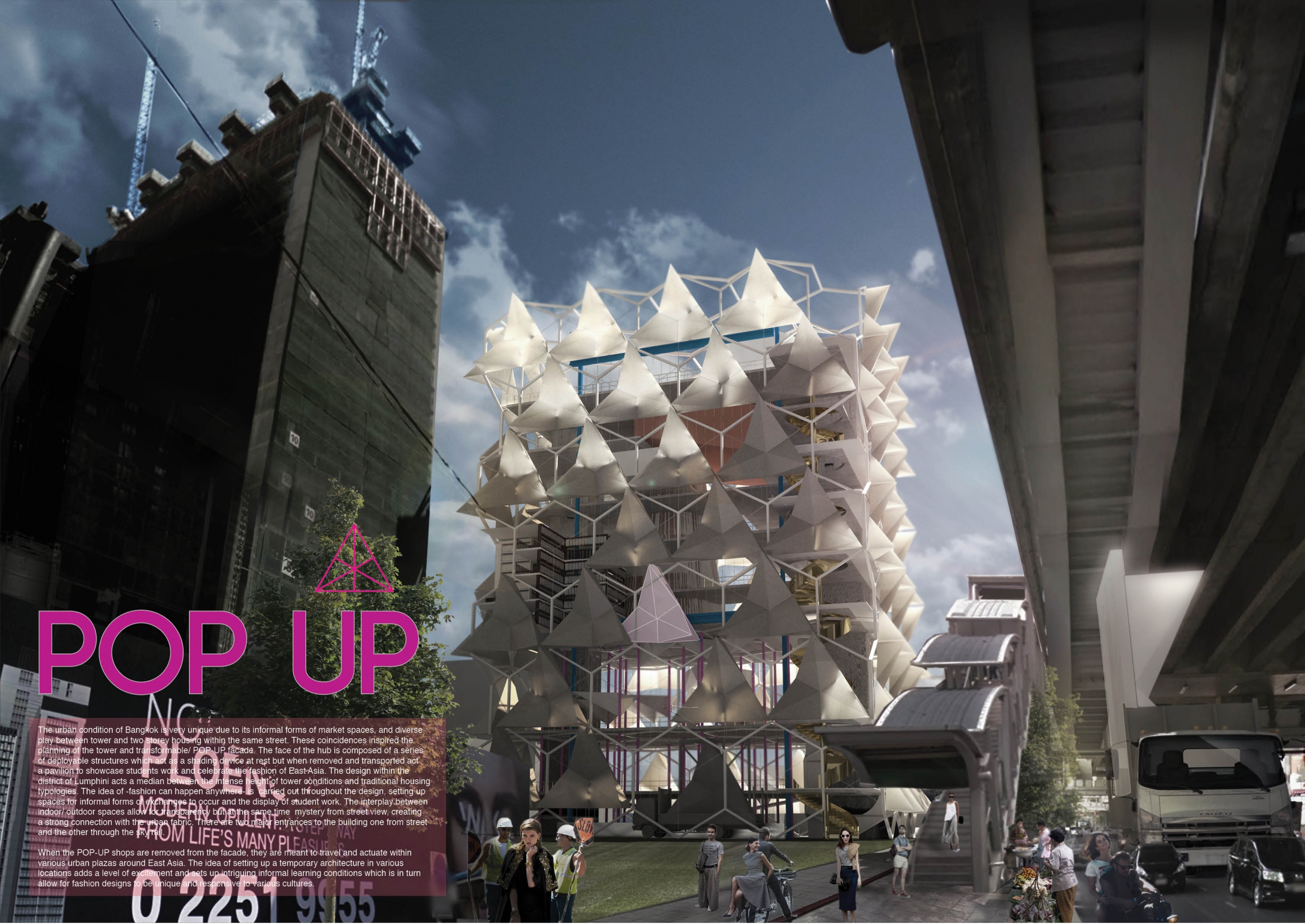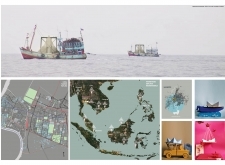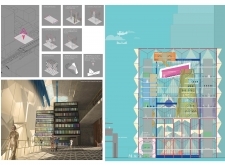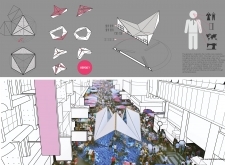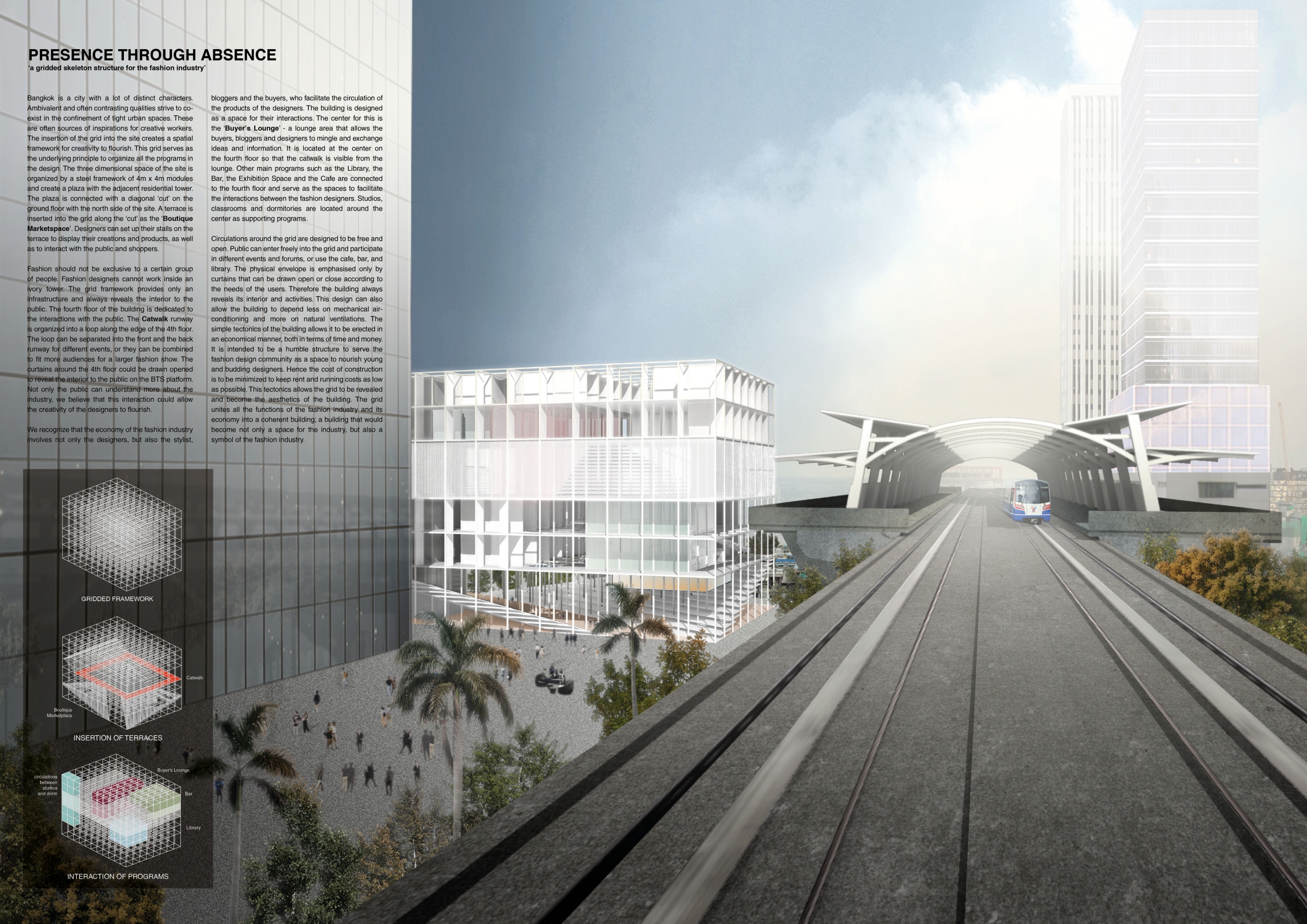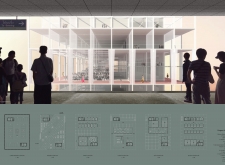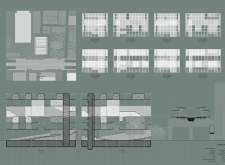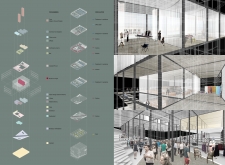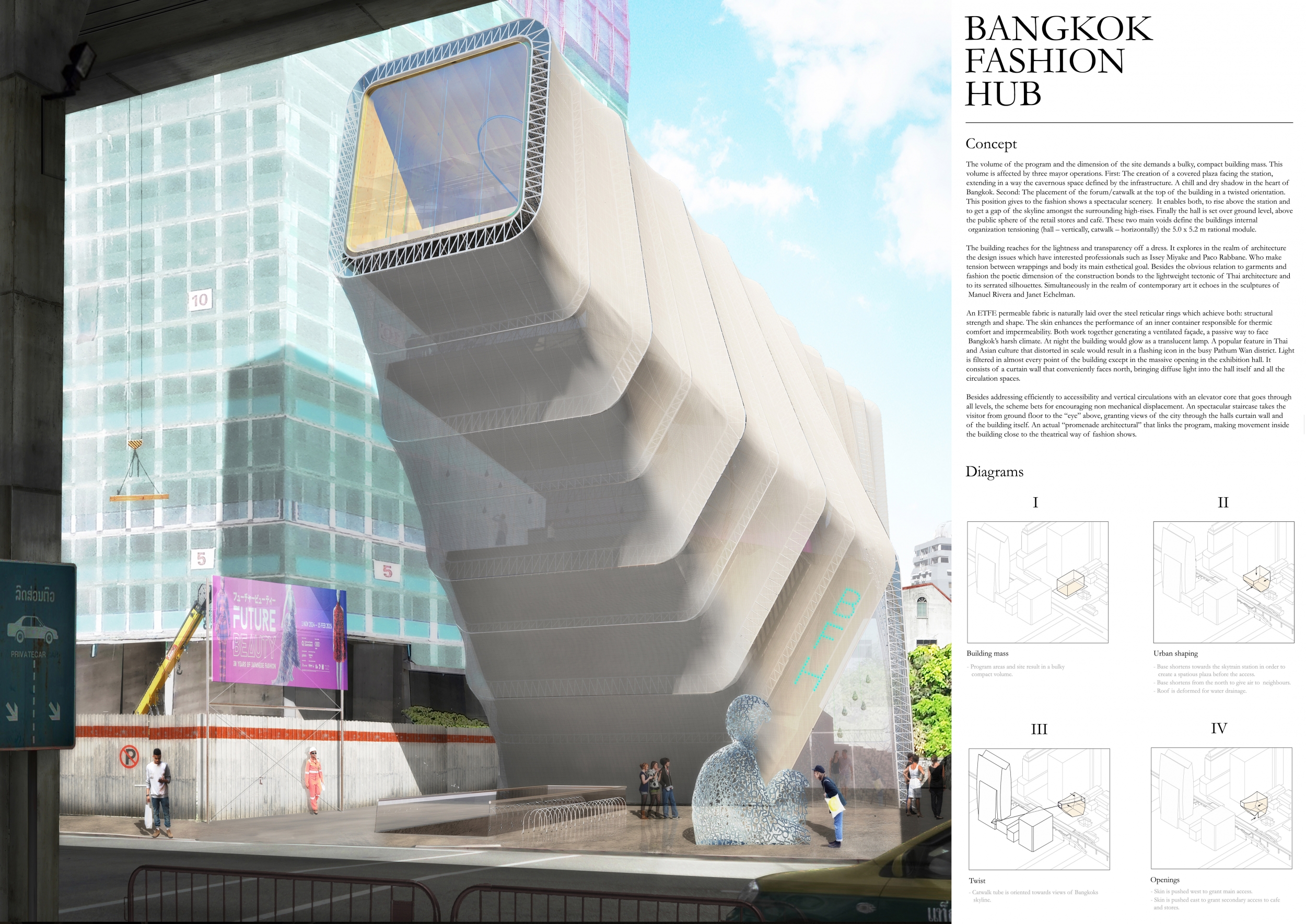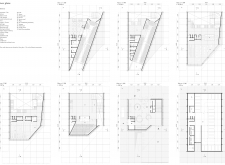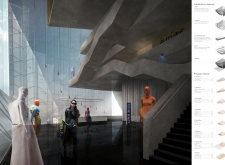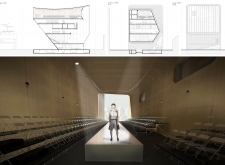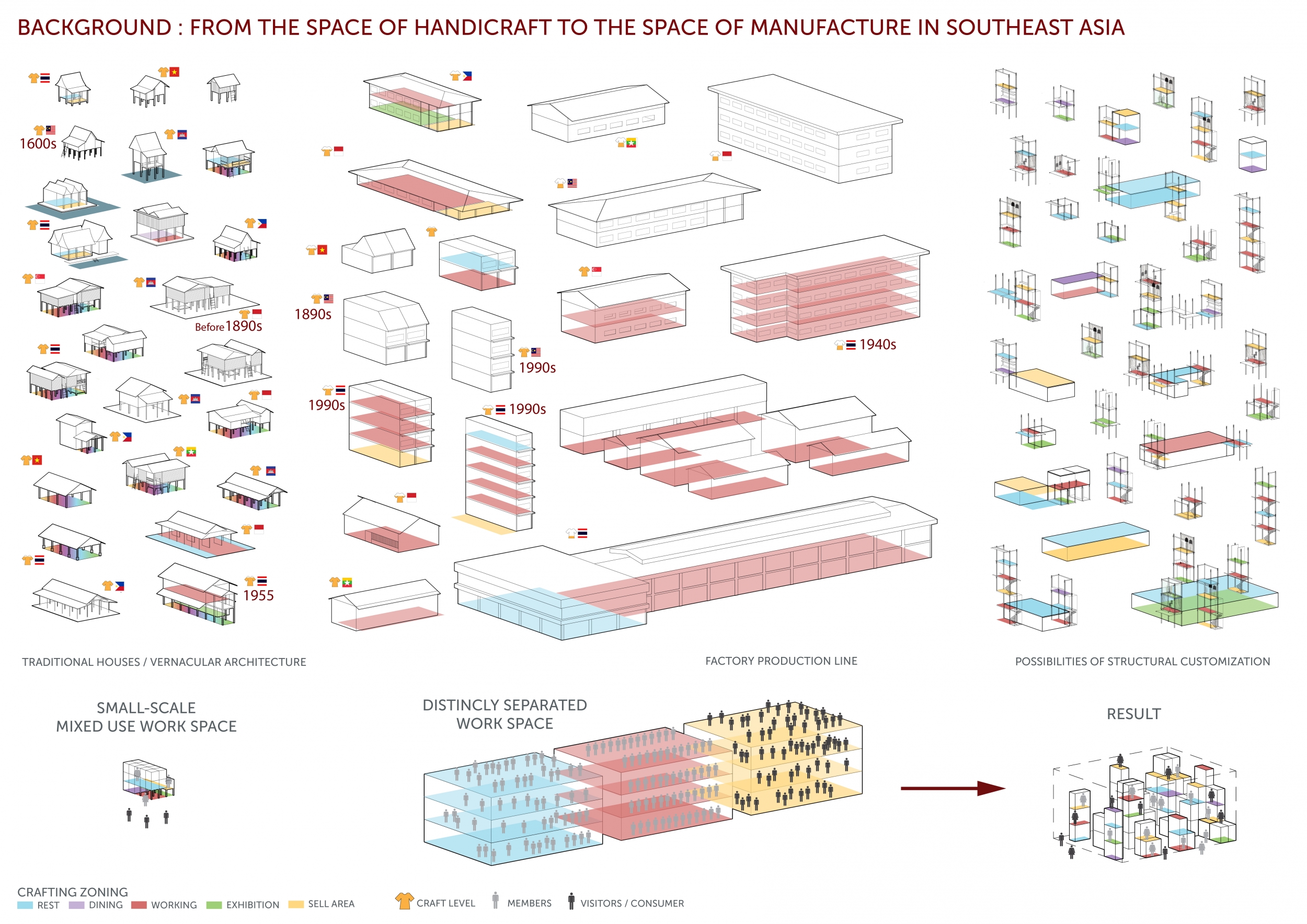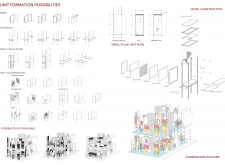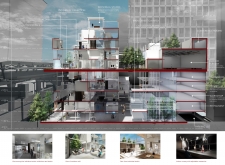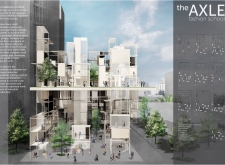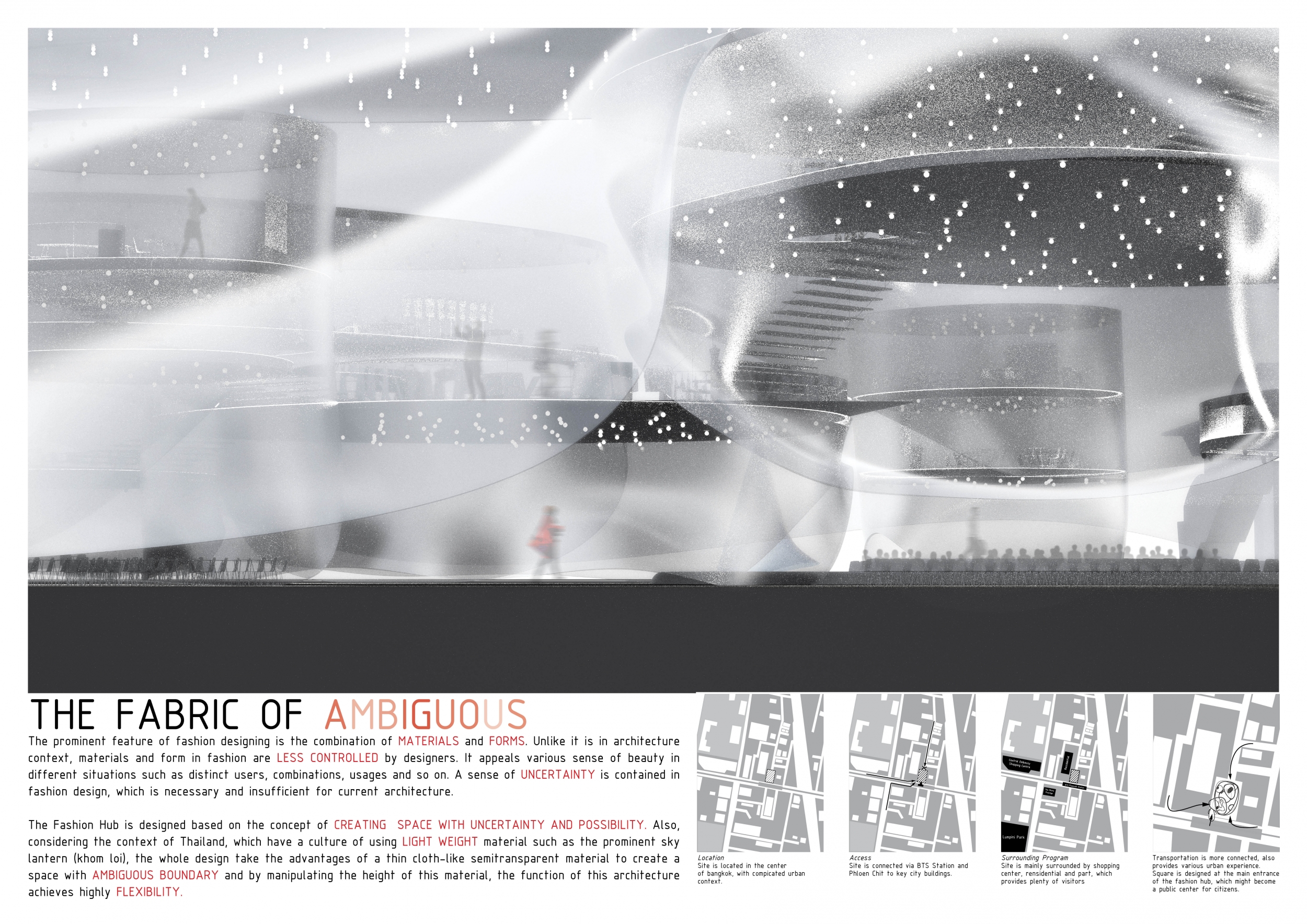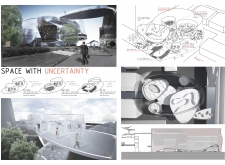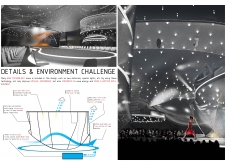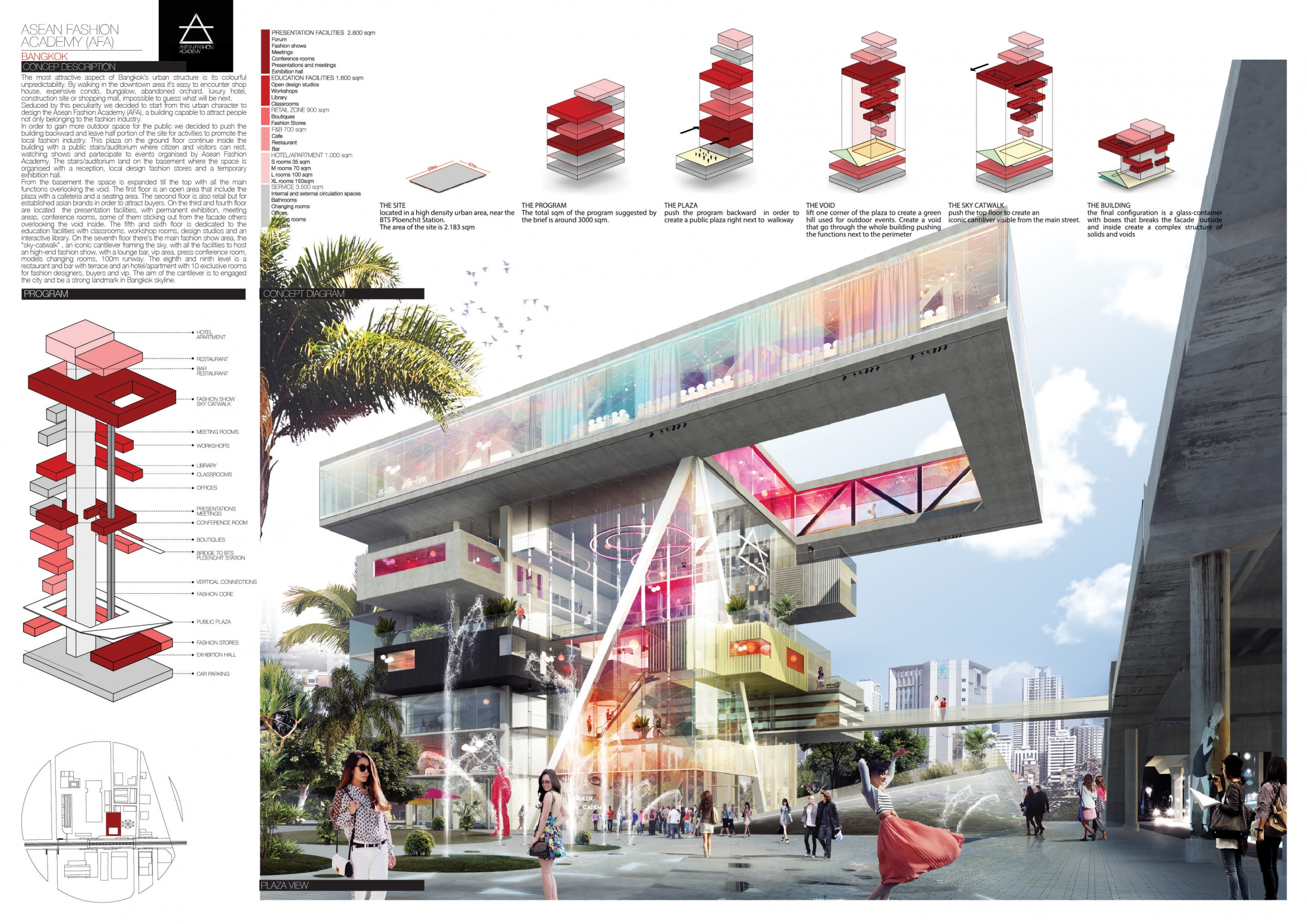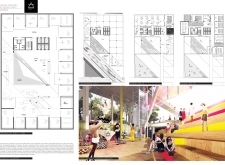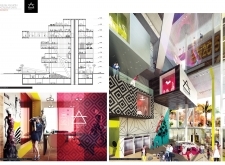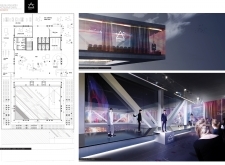Introduction
Emerging from an unexpected context, the Bangkok Fashion Hub seeks to gather the local, regional, and international fashion communities in an active environment in the Thai capital. Part community center, part retail, part library, part school, part exhibition, and part public space, the diverse program calls for strong designers to weave together disparate functions into one strong concept.
Each entry was evaluated on a number of criteria, including but not limited to: strength and clarity of concept, originality, quality of presentation, response to urban context, and most importantly, its viability as a cultural fashion hub. While the concept of a "Fashion Hub" is vague and somewhat subjective, the judges placed particular focus on the architecture’s ability to invite the community inside via a spatially porous place that encourages unexpected visitors and chance encounters. As such, the fashion hub transcends beyond the fashion world to engage anyone passing through the neighbourhood, country, or region.
Competition results in media publications
1st Prize Winner
Bangkok Fashion Hub
Architecture Competitions give us a great opportunity to do something different from the daily work routine, still being engaged in our favorite occupation, experimenting and developing our skills. It is also quite challenging to compete with architects from all over the world, comparing different solutions and learning new approaches. No doubt, you will improve, even if you don't win.
Read full interview Russian Federation
Russian Federation
Jury feedback summary
This entry is striking as a floating ethereal presence on the site. It is clean and compact while also poetic and provocative. The choice for semi-transparency is both well-resolved and highly relevant in the context of fashion and textiles. The use of translucent polymer tubes as a stacking architectonic element presents both an innovative structural thesis as well as a poetic experience from both inside and outside the project.
2nd Prize Winner
Jury feedback summary
This entry, although quite loud at first glance, presents a clear and convincing argument for the flexibility of the fashion hub, claiming that at its core, it must grow and change with the varying program needs of the center. The flexibility of the space, implemented primarily through a large retractable platform in the center of the project, achieves the core concept of the task – to accommodate all kinds of people and all kinds of activities.
3rd Prize Winner
Jury feedback summary
This entry, in contrast to the majority of submissions, conceives of the project as a series of small volumes linked by an activated interstitial space, rather than as one towering object on site. As such, and coupled with the choice to use extruded house forms, it evokes the idea of a village or campus, thus establishing a strong and unique identity for the fashion hub.




